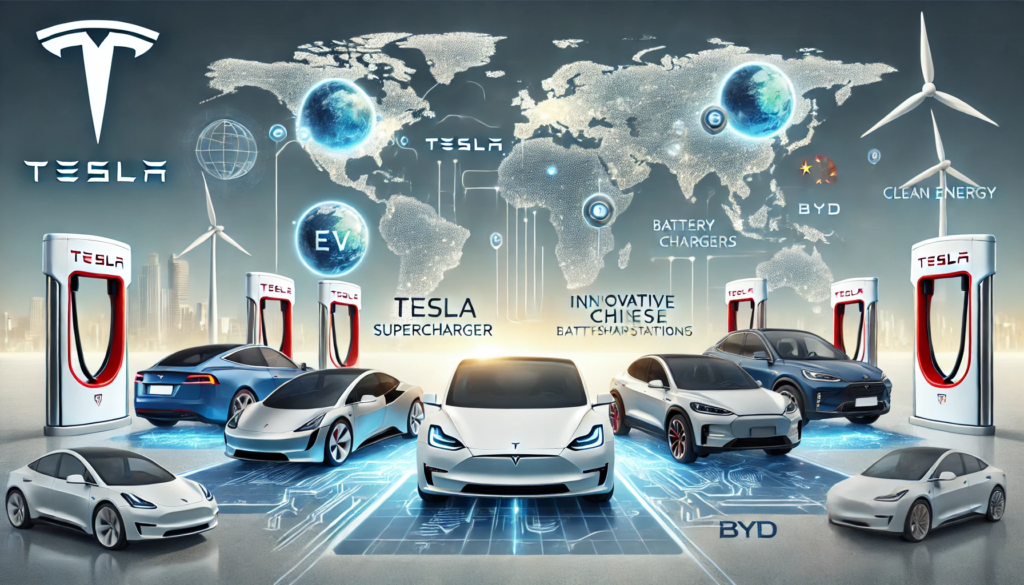When people think of the automotive world, they usually picture cars. However, the industry depends on a complex network. This includes suppliers, manufacturing processes, and logistics. These systems span the globe. They start with raw material extraction and end with cars reaching dealerships. Historically, fossil fuels played a vital role.
Gasoline and diesel were critical to traditional auto systems. Cars needed fuel, and entire industries arose to provide it. Automakers built cars. Dealerships sold them. Gas stations kept them running. Each part operated within its niche. As a result, this system was interwoven but static.
Today, a significant transformation is underway. Many believed the shift to electric vehicles would be simple. They assumed automakers would build EVs, and charging infrastructure would follow. It seemed logical. However, the reality has been far more disruptive.
New technologies often break old systems. Just as smartphones redefined communication, EVs are reshaping the auto industry. Tesla’s approach, once highly criticized, changed everything. By combining vehicle production, software updates, and exclusive charging, Tesla set a new standard. It redefined expectations for the future. In the same way smartphones bypassed carrier control, Tesla challenged long-standing norms in the automotive world.
Tesla’s Revolutionary Model
Tesla didn’t just improve the car; they reinvented the idea of what a car company could be. By rejecting outdated systems, Tesla created a seamless experience. From direct sales to integrated charging, it redefined the auto industry. Meanwhile, legacy automakers were stuck in old models like dealerships and gas stations. As Tesla surged ahead, creating surprise and amazement, China was watching and learning.
Without Tesla, None of This Would Have Happened
Tesla is often credited with revolutionizing the EV market. Before Tesla, Nissan’s Leaf was the first mass-market EV. However, Nissan treated the Leaf as a niche product. For instance, it was mainly sold in Norway and failed to expand globally. As a result, Nissan missed the chance to scale its EV business. This reflected a lack of vision and unwillingness to innovate.
Tesla changed that by thinking bigger. It built a car that was electric and aspirational. Thus, Tesla proved EVs could succeed globally when paired with advanced technology and a great user experience. Without Tesla, the EV revolution might still be stuck.
Enter China: Watch, Learn, Improve
China took Tesla’s playbook and, in some cases, surpassed it. For example, companies like BYD, Xpeng, and NIO are not just copying Tesla; they are innovating. NIO’s battery-swapping stations solve charging speed issues by providing a fully charged battery in minutes. Additionally, Xpeng has advanced autonomous driving and vehicle-to-everything communication. Furthermore, BYD controls its supply chain, making it more scalable and cost-efficient.
Chinese automakers lead in charging speed. For instance, BYD and Xpeng have chargers capable of 500-600 kW. This drastically reduces charging time. Their EVs also feature advanced systems designed for tech-savvy users. From in-car karaoke to driver assistance, they cater to modern needs.
While Tesla still leads in software, Chinese automakers are catching up. Their agility and government support allow them to innovate faster. Consequently, this has reshaped the competitive landscape.
For Legacy Automakers, It’s Already Too Late
For many traditional automakers, time has run out. Honda, Mitsubishi, and Nissan recently merged. This move was less about gaining an edge and more about survival. Without vision or speed, these companies risk falling further behind. Instead of reinvention, they may face stagnation.
Disruption comes from outsiders. Tesla and China’s EV industry are examples. Meanwhile, legacy automakers, held back by outdated practices, struggle to compete in this new era.
Rethinking Charging Infrastructure
Charging networks are now a critical battleground. Tesla’s Supercharger network set a high standard for reliability. However, Chinese automakers are innovating in new ways. For example, NIO’s battery-swapping eliminates wait times. Other companies invest heavily in ultra-fast chargers. These approaches address range anxiety and build consumer trust.
Consequently, Chinese EV companies are redefining ownership. By controlling charging and software, they create experiences that rival Tesla. In some cases, they surpass it.
The Global Impact
Tesla’s success and China’s advancements have set a new standard. Automakers must now create seamless, user-focused systems. It’s no longer just about building cars; it’s about rethinking the entire experience.
Chinese automakers iterate quickly and deliver cutting-edge technology. Tesla remains a pioneer, but competition is fierce. Software is the final frontier, where Tesla still holds an edge. However, with China’s pace of innovation, this gap may soon close.
Conclusion
The EV revolution is about more than batteries. It’s about transforming the way we think about transportation. Tesla forced the industry to evolve. Meanwhile, Chinese EV makers are now driving it further with bold innovation. Legacy automakers must adapt—or risk irrelevance in a rapidly changing world.
Disclaimer
While this blog highlights Tesla’s achievements, I no longer hold any investment in the company. Too often, people promote businesses they are invested in, which suggests bias. For transparency, I sold my Tesla shares the day after Musk endorsed Trump. Currently, I own a Tesla Model Y, a Tesla Model 3, and a Chinese MG4. I am also considering switching to a Zeekr 7X, Xpeng G6, or the updated Model Y Juniper. Politics aside, I aim to focus on industry insights and innovation.


